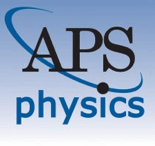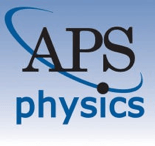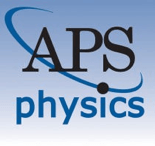
REVIEWS OF MODERN PHYSICS
Scope & Guideline
Connecting Ideas and Discoveries in Physics
Introduction
Aims and Scopes
- Interdisciplinary Research:
The journal focuses on research that intersects physics with other scientific disciplines, such as chemistry and biology, as evidenced by papers discussing applications in cancer medicine and quantum information theory. - Quantum Physics and Information:
A consistent theme in the journal is the exploration of quantum mechanics, including quantum computing, quantum error mitigation, and quantum networks, highlighting the growing importance of quantum technologies. - Complex Systems and Phenomena:
The journal covers complex physical systems, including studies on turbulence, superconductivity, and many-body dynamics, allowing for a deep understanding of emergent phenomena in various contexts. - Theoretical and Experimental Advances:
There is a strong emphasis on both theoretical frameworks and experimental techniques, such as laser-produced plasmas and ultrafast electron diffraction, ensuring that the journal remains at the forefront of contemporary physics. - Nobel Lectures and Colloquia:
The inclusion of Nobel Lectures and colloquia provides high-impact summaries and discussions of pivotal developments in physics, enriching the journal's content with expert insights.
Trending and Emerging
- Quantum Technologies:
Research into quantum technologies, including quantum computing, quantum networks, and quantum cryptography, has surged, driven by advancements in experimental techniques and theoretical frameworks. - Topological Phases and Materials:
There is a growing focus on the study of topological phases in materials, particularly in the context of superconductivity and quantum materials, as this area promises novel applications and deeper theoretical insights. - Non-equilibrium Dynamics and Quantum Thermodynamics:
The exploration of non-equilibrium dynamics in quantum systems is gaining momentum, highlighting the relevance of thermodynamic principles in quantum contexts and the implications for future technologies. - Biophysics and Medical Applications:
Interdisciplinary research that applies physical principles to biology and medicine, such as studies on magnetic resonance spectroscopy and cancer treatments, is increasingly prominent, reflecting a broader application of physics. - Machine Learning and Physics:
The integration of machine learning techniques into physics research is emerging as a significant trend, with applications ranging from data analysis in particle physics to modeling complex systems.
Declining or Waning
- Classical Physics Applications:
There seems to be a waning focus on classical mechanics and traditional physics applications, as evidenced by fewer publications on topics like classical thermodynamics and fluid dynamics. - Astrophysical Phenomena:
Although astrophysics remains a crucial area of study, there has been a noticeable decrease in papers specifically focused on astrophysical observations and theories, such as cosmic background radiation and large-scale structure. - Foundational Quantum Mechanics:
Research that revisits foundational aspects of quantum mechanics, such as debates on interpretation or historical perspectives, appears to be less prevalent, indicating a shift towards more applied quantum technologies. - Static Models in Condensed Matter Physics:
The focus on static models to describe condensed matter systems has diminished, with recent publications favoring dynamic and time-resolved studies instead. - Traditional Particle Physics:
There is a declining emphasis on traditional topics in particle physics, such as standard model discussions, as newer frameworks and experimental results gain traction.
Similar Journals

PHYSICS-USPEKHI
Shaping the Future of Scientific DiscoursePHYSICS-USPEKHI, published by Uspekhi Fizicheskikh Nauk, is a prominent peer-reviewed journal in the field of physics and astronomy, reaching researchers and professionals since its inception in 1993. With an ISSN of 1063-7869 and an E-ISSN of 1468-4780, this esteemed journal has been classified as Q2 in the Physics and Astronomy category based on the 2023 quartiles, ranking 74 out of 243 journals in its Scopus classification, placing it in the 69th percentile. Although currently not an open access journal, it provides invaluable insights and advancements in the field, fostering an environment for scholarly exchange and collaborative research. Based in Moscow, Russia, PHYSICS-USPEKHI continues to shape the landscape of theoretical and experimental physics, inviting submissions that contribute to its rich legacy of high-impact scientific discourse.

JOURNAL OF THE KOREAN PHYSICAL SOCIETY
Connecting Innovators in Physical ScienceJOURNAL OF THE KOREAN PHYSICAL SOCIETY is a prominent academic journal dedicated to advancing the field of physics, published by the prestigious Korean Physical Society. With its extensive contribution to the scientific community since its inception in 1996, this journal serves as an essential platform for the dissemination of innovative research findings in various branches of physical science. Despite its current categorization in Q4 and a ranking reflecting its early-stage impact relative to peers, it remains a valuable resource for researchers, professionals, and students eager to explore developments in general physics and astronomy. The journal is accessible in both print and electronic formats, making it convenient for a global audience. Each issue aims to foster collaboration and knowledge-sharing within the field, ensuring that it remains relevant and instrumental in shaping future research directions. Located in South Korea, the journal continues to nurture a vibrant academic community, contributing to the ongoing dialogue in the global scientific arena.

OPEN SYSTEMS & INFORMATION DYNAMICS
Connecting Disciplines: Where Mechanics Meets Information Dynamics.OPEN SYSTEMS & INFORMATION DYNAMICS, published by World Scientific Publishing Co Pte Ltd, is a leading international journal dedicated to advancing research in the interdisciplinary areas of computational mechanics, information systems, and mathematical physics. With its ISSN 1230-1612 and E-ISSN 1793-7191, the journal has established itself as an influential platform for disseminating original research findings, reviews, and methodologies that address complex systems and dynamics. Its current impact factor reflects a solid reputation within the academic community, particularly amongst researchers in the fields of physics, statistics, and computational sciences. The journal's scope encompasses a diverse array of subjects, earning a Q2 classification in Computational Mechanics and Q3 in multiple other categories, including Fluid Flow and Transfer Processes and Information Systems. By providing open access to a wealth of knowledge, OPEN SYSTEMS & INFORMATION DYNAMICS is committed to fostering collaboration and innovation for students, researchers, and industry professionals alike, positioning itself as a cornerstone of scientific exploration and discovery in Singapore and beyond.

Physical Review X
Elevating Research Standards in Physics and AstronomyPhysical Review X is a premier open-access journal published by the American Physical Society, dedicated to advancing the frontiers of knowledge in the field of physics and astronomy. Established in 2011, it has quickly gained recognition for its rigorous peer-review process and high-quality research contributions, achieving an impressive impact factor that solidifies its position in the top quartile (Q1) of its category for 2023. With a Scopus rank of #8 out of 243 in the general physics and astronomy division, it stands in the 96th percentile, showcasing its vital role in disseminating groundbreaking discoveries and theoretical insights across diverse physics domains. As an open-access journal, Physical Review X ensures that research is freely accessible to a global audience, fostering collaboration and innovation. Researchers, professionals, and students alike are invited to explore its extensive archive and contribute to the ongoing dialogue in the scientific community, empowering the next generation of physicists and astronomers.

EUROPEAN PHYSICAL JOURNAL B
Bridging Theory and Application in Condensed Matter ScienceEUROPEAN PHYSICAL JOURNAL B (ISSN: 1434-6028, E-ISSN: 1434-6036), published by Springer, is a prominent international journal based in Germany that focuses on the fields of Condensed Matter Physics and Electronic, Optical and Magnetic Materials. With a converged publication timeline from 1998 to 2024, it caters to a diverse audience that includes researchers, professionals, and students striving for the latest advancements in these vital areas of physics. The journal is recognized with a Q3 ranking in both relevant categories for 2023, showcasing its solid yet notable standing within the academic community. Although currently without an H-index, its Scopus rankings reflect a percentile performance of 41st and 39th, respectively, indicating a growing influence among its peers. The journal offers open access options, ensuring that groundbreaking research is widely accessible and contributes to the collective knowledge within the scientific domain. By aiming to publish high-quality, well-researched articles, the EUROPEAN PHYSICAL JOURNAL B plays a crucial role in disseminating innovative findings and fostering collaboration in the field of physics.

PHYSICAL REVIEW LETTERS
Pioneering High-Impact Research in PhysicsPhysical Review Letters, published by the American Physical Society, is a premier journal in the field of Physics and Astronomy renowned for its rapid dissemination of high-impact research findings. With a distinguished history dating back to 1958 and an impressive ranking of #13 out of 243 in the general physics category, it stands proudly within the Q1 quartile, placing it in the top 6% of journals in its field. The journal focuses on brief reports of significant fundamental research across all areas of physics, making it an essential resource for researchers, professionals, and students seeking to stay at the forefront of developments in their field. Although Physical Review Letters does not offer open access options, its rigorous peer-review process ensures a high standard of quality and relevance in its published articles. With an unwavering commitment to advancing the understanding of physical science, this journal is indispensable for those looking to make a genuine impact in their research endeavors.

PHYSICAL REVIEW B
Exploring the Depths of Electronic and Magnetic MaterialsPHYSICAL REVIEW B, published by the American Physical Society, is a leading journal in the field of condensed matter physics and materials science, particularly focusing on electronic, optical, and magnetic materials. With an ISSN of 2469-9950 and an E-ISSN of 2469-9969, this periodical has garnered a prestigious reputation, achieving a Q1 ranking in both relevant categories as of 2023. The journal has recorded significant impact as reflected in its Scopus ranks, notably positioned at #95 out of 434 in Condensed Matter Physics and #75 out of 284 in the Materials Science sector, illustrating its importance in advancing research and discussions in these critical areas. Although it does not offer open access, PHYSICAL REVIEW B remains an invaluable resource for academics, researchers, and professionals seeking to increase their understanding of contemporary issues in condensed matter and material sciences. Established in 2005, this journal continues to foster innovation and dissemination of knowledge, making it a cornerstone publication for those engaged in cutting-edge research.

Frontiers of Physics
Transforming Theoretical Insights into Practical AdvancementsFrontiers of Physics, published by Higher Education Press, is a premier open-access journal dedicated to fostering innovative research and excellence within the field of physics. With an ISSN of 2095-0462 and an E-ISSN of 2095-0470, this rapidly growing journal has established itself as a valuable platform for disseminating cutting-edge findings, covering a diverse range of topics from theoretical frameworks to experimental advancements. Notably, Frontiers of Physics has achieved an impressive Q1 ranking in the 2023 Scopus Quartiles for Physics and Astronomy, securing a competitive 5th out of 81 positions in its category, reflecting a high impact factor that underscores its importance to the scientific community. Since its inception in 2011 and continuing through 2024, the journal aims to bridge the gap between academia and industry, encouraging collaboration among researchers, professionals, and students alike. Its commitment to open access ensures that high-quality research is readily accessible, thereby promoting knowledge sharing and advancement in the global physics community. Explore the potential of your research in Frontiers of Physics, where the future of physics flourishes.

FOUNDATIONS OF PHYSICS
Unraveling the Historical Threads of PhysicsFOUNDATIONS OF PHYSICS is a prestigious journal published by SPRINGER, dedicated to the interdisciplinary exploration of the philosophical and historical dimensions of physics. With a rich publication history spanning from 1970 to 2024, the journal holds a prominent position in the academic community, evidenced by its Q1 ranking in both History and Philosophy of Science and Philosophy, as well as a respectable Q2 in Physics and Astronomy for miscellaneous topics. The journal's ISSN is 0015-9018 and its E-ISSN is 1572-9516, facilitating access to a wide array of scholarly articles. Although it does not offer an open access option, the journal remains an invaluable resource for researchers, professionals, and students eager to delve into the complexities that intertwine physics with philosophical inquiry and historical context. As a critical platform for groundbreaking research, FOUNDATIONS OF PHYSICS fosters vibrant discourse and encourages innovative thought within these essential fields.

PHYSICS ESSAYS
Exploring the Frontiers of Physics and AstronomyPHYSICS ESSAYS, published by PHYSICS ESSAYS PUBLICATION, serves as a unique and influential platform within the field of Physics and Astronomy. With an ISSN of 0836-1398 and an E-ISSN of 2371-2236, this journal fosters the dissemination of innovative ideas and rigorous research, encouraging contributions that challenge conventional paradigms. Although the journal's Scopus coverage has been discontinued since 2017, it continues to uphold its legacy of scientific inquiry with a focus on pivotal developments in the discipline, garnering a Scopus rank within the 15th percentile. The journal, based in Ottawa, Ontario, Canada, invites submissions that are reflective of its broad scope in experimental, theoretical, and applied physics, appealing to a diverse audience of researchers, professionals, and students alike. While it operates on a non-open access model, the journal remains an essential resource for those seeking to navigate the complexities of modern physics.